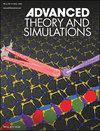Mathematical Modeling and Numerical Simulations of Influenza Transmission Dynamics with Structured Infectious Population
IF 2.9
4区 工程技术
Q1 MULTIDISCIPLINARY SCIENCES
引用次数: 0
Abstract
Influenza remains a major public health concern owing to its rapid evolution through antigenic drift and its potential to cause global pandemics. These factors contribute to widespread infection, severe health complications, and significant mortality worldwide. To understand the dynamics of the disease and control the dispersion of influenza, the existing susceptible, exposed, vaccinated, symptomatic infected, asymptomatic infected and recovered () framework is enhanced with a more complex mathematical model. This extension approach allows for the incorporation of multiple factors, including vaccination, waning immunity, and asymptomatic disease carriers. The estimation of , the basic reproduction number of the virus, is one of the outcomes vital to understanding the transmission of the virus. The virus's sensitivity to changes in control measures, such as antivirals and vaccination drives, is analyzed. The non‐standard finite difference method and Runge‐Kutta method are employed for numerical simulations. These results demonstrate a noticeable convergence and accuracy using the NSFD approach, particularly when observing different time intervals. By analyzing both disease‐free and endemic states, interventions aimed at eradicating or stabilizing the virus are assessed. This study provides valuable evidence for the development of effective health strategies. The insights and methods presented in this study can strengthen influenza control efforts and enhance global preparedness for future pandemics.结构感染人群流感传播动力学的数学建模与数值模拟
流感仍然是一个主要的公共卫生问题,因为它通过抗原漂移而迅速演变,并有可能引起全球大流行病。这些因素导致世界范围内的广泛感染、严重的健康并发症和大量死亡率。为了了解疾病的动态并控制流感的传播,现有的易感、暴露、接种疫苗、有症状感染、无症状感染和康复()框架通过更复杂的数学模型得到加强。这种扩展方法允许纳入多种因素,包括疫苗接种,免疫力下降和无症状疾病携带者。估计病毒的基本繁殖数是了解病毒传播的重要结果之一。分析了病毒对诸如抗病毒药物和疫苗接种等控制措施变化的敏感性。采用非标准有限差分法和Runge - Kutta法进行了数值模拟。这些结果表明,使用NSFD方法具有明显的收敛性和准确性,特别是在观察不同的时间间隔时。通过分析无病和流行状态,评估旨在根除或稳定病毒的干预措施。本研究为制定有效的卫生战略提供了有价值的证据。本研究提出的见解和方法可以加强流感控制工作,并加强全球对未来大流行的防范。
本文章由计算机程序翻译,如有差异,请以英文原文为准。
求助全文
约1分钟内获得全文
求助全文
来源期刊

Advanced Theory and Simulations
Multidisciplinary-Multidisciplinary
CiteScore
5.50
自引率
3.00%
发文量
221
期刊介绍:
Advanced Theory and Simulations is an interdisciplinary, international, English-language journal that publishes high-quality scientific results focusing on the development and application of theoretical methods, modeling and simulation approaches in all natural science and medicine areas, including:
materials, chemistry, condensed matter physics
engineering, energy
life science, biology, medicine
atmospheric/environmental science, climate science
planetary science, astronomy, cosmology
method development, numerical methods, statistics
 求助内容:
求助内容: 应助结果提醒方式:
应助结果提醒方式:


